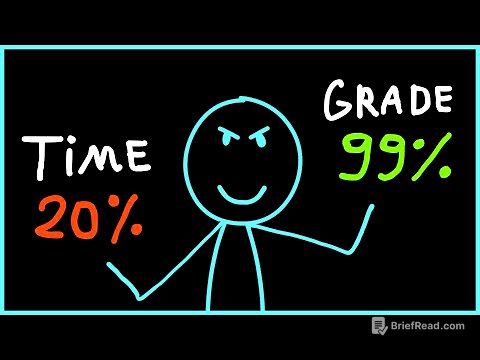TLDR;
This video provides a comprehensive guide to improving prompting skills for AI tools like ChatGPT, Gemini, and Perplexity. It outlines three levels of prompting, starting from basic, vague requests to advanced, knowledge-based strategies. The video emphasizes the importance of specificity, structured prompts, and building a custom knowledge base to achieve expert-level results, particularly for solo entrepreneurs.
- Level 1: Basic Prompting: Simple, one-line requests that often yield generic results due to their vagueness.
- Level 2: Structured Prompting: Using a rigid prompt structure including the goal, return format, warnings, and context to get more detailed and tailored outputs.
- Level 3: Knowledge-Based Prompting: Creating a custom knowledge base using deep research guides to train the AI and achieve expert-level results specific to your brand.
Intro [0:00]
The video introduces the concept of prompting AI tools effectively, emphasizing that most people only scratch the surface due to a lack of proper prompting techniques. The presenter shares their journey of studying and researching to master prompting and highlights that bad prompts lead to bad results. The video aims to guide solo entrepreneurs through three levels of prompting, from basic to advanced, to achieve amazing results for their businesses. Examples will be related to photography but can be tailored to any business.
Level 1: Basic Prompting [1:03]
Basic prompting involves typing simple, one-line requests into AI tools, such as "write a marketing plan for a photography business." While this is a common starting point, the prompts are often too vague, leading to generic and unhelpful advice. To improve results, adding specificity is crucial. For example, instead of a generic request, specify the type of photography, target audience, and location, such as "Write a marketing plan for a luxury wedding photographer targeting high net worth clients in Austin, Texas." Providing more details to the AI leads to more actionable and realistic advice, marking the first step towards better prompting and more valuable results.
Level 2: Structured Prompting [2:39]
Structured prompting involves giving detailed instructions to the AI, marking the beginning of prompt engineering. This approach uses a rigid prompt structure consisting of four parts: the goal, the return format, the warnings, and the context. First, clearly define the goal, such as "Create a 90-day marketing strategy for a wedding photography studio." Second, specify the return format, like a bullet list or a table. Third, provide warnings to set boundaries and avoid unwanted outputs, such as "no generic advice like just post on Instagram." Fourth, provide context about your business, audience, and style. For example, "I own a modern luxury wedding photography studio in Austin, Texas, targeting high-net-worth couples and luxury wedding event planners." Using this structure leads to custom-tailored marketing plans and content strategies.
Level 3: Knowledge-Based Prompting [6:16]
Knowledge-based prompting involves treating the AI as a research assistant by creating a custom knowledge base to train it. This level requires building deep research guides that establish the standards, strategies, and principles of your business. These guides can be created using the AI's deep research functionality and the structured prompt template. Examples include creating a brand development blueprint, a content strategy guide, and an SEO best practices manual, all tailored to a specific niche, such as luxury wedding photography. By using these guides in subsequent prompts, the AI can pull from a customized research knowledge base, leading to expert-level work. This approach involves training the AI first, then prompting it, and continually refining prompts based on results.
Pro Tips for Prompting [13:59]
To take prompting to the next level, consider creating custom GPTs specifically for your business and uploading all your guides to platforms like ChatGPT, Claude, and Google Gemini. If you're unsure how to formulate a prompt, ask the AI what a standard report might look like and then ask it to create a prompt to help you generate that report for your specific business. When facing challenges, zoom out and identify what knowledge you're lacking, then ask the AI to provide that knowledge so you can improve your prompts.









